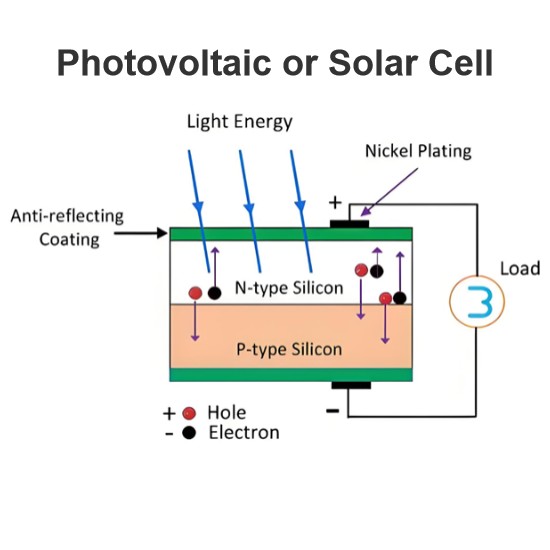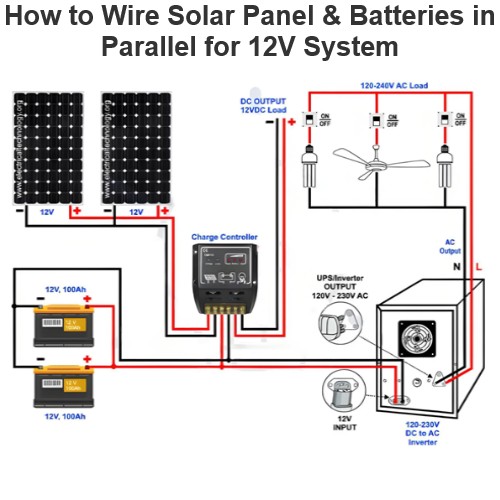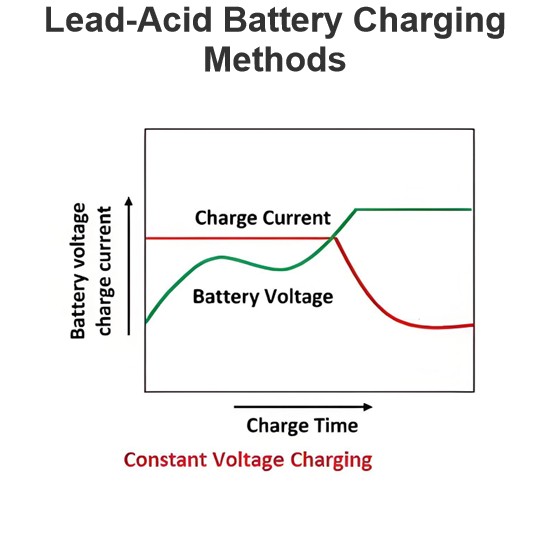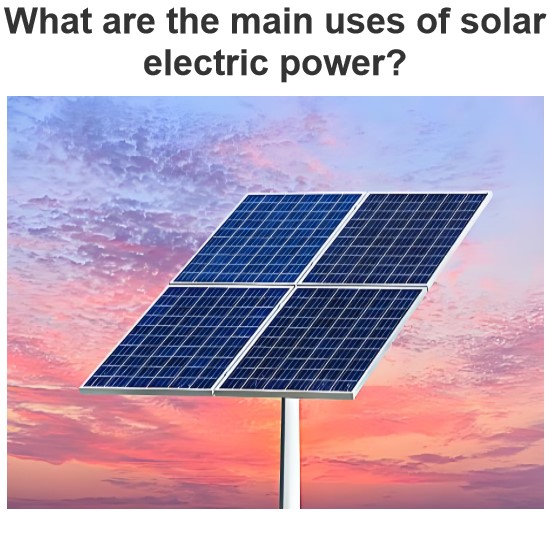Types of Battery
Different types of battery with various configurations are available. With the inventions of various new consumer electronic devices, electric vehicles, renewable energy storage needs, space and military applications, battery power nowadays is consumed as food. If we look around us, we find a bunch of batteries hiding inside almost every device we have, wall clocks, mobile phones, laptops, watches, calculators, inverters, hair dryer, trimmers, toys and many more. Batteries make devices portable by separating them from the utility supply. Today’s batteries live long and have high energy storage capacities. Portable power banks for long trips have become indispensable choices. Batteries come in various sizes and shapes, like button, flat, round and prismatic configurations. The batteries are both non-rechargeable called primary batteries and rechargeable types called secondary batteries. While the primary ones cannot be recharged once decayed, the secondary batteries can be recharged again and again. Nevertheless, primary batteries are cheap, compact, easy to use and have a longer life than the secondary batteries.
Since batteries come in various sizes, chemicals used and shapes, these have been provided with certain nomenclature by IEC and ANSI institutions to understand their specifications according to our needs. For example, consider an AA 1.5V type battery as shown below.
As we can see it says AA LR6 1.5V. Now let us understand what does this name or code means. Here
LR6 here is IEC size code as L stands for electrochemical series system i.e. for alkaline/MnO2 battery and R6 stands for physical dimensions. An R6 configuration means R-round battery with a maximum overall height of 50.5 mm and a maximum diameter of 14.5mm.
AA is an ANSI designation for LR6 configuration batteries.
Consider another example of a button cell as shown below
It says CR2025. It is the IEC code in which C stands for Lithium system R for round-cylindrical 20 means 20mm diameter of battery and 25 represents the height of 2.5mm. For more information refer to the ANSI and IEC codes for batteries.
Types of Battery
Primary Cells or Primary Batteries
These cannot be recharged once decayed. The advantages of primary cells are compact size and availability in various shapes like cylindrical, button, rectangular and prismatic, and these have high power-density, long shelf life, low level of discharging and portability. Its countless number of applications include watches, clocks, medical devices, radio and other communication devices, nano applications, memory chips and many more.
If the primary cell does not contain liquid electrolyte then it is known as ‘dry cell’. A dry cell contains moisten paste electrolyte. The figure above shows the cross-section of a Zinc Carbon Battery.
Some of the different types of primary batteries and their applications have been discussed below :
Zinc-Carbon/Alkaline/MnO2 Cell or Battery
One of the earliest forms of dry cell i.e. Zinc-carbon or Leclanche cell had been in use for almost a century. But its now outdated with the commercial use of new primary batteries such as having alkaline/MnO2 as a cathode which has higher capacity and higher energy density and longer shelf life.
Mercuric Oxide Batteries
The usage of mercuric oxide batteries is very limited due to the hazardous implications of the mercury to the environment. These batteries come as Zinc/cadmium anodes with mercuric oxide as a cathode. It comes in cylindrical, small flat button forms. It finds applications as low power sources in calculators, portable radios, watches, camera etc.
Zinc Silver Oxide Batteries
These are similar in design to mercuric batteries but have higher energy density. It works better at low temperatures. Used mainly as button cell batteries and finds applications in photographic equipment, electronic watches, hearing aids etc.
Zinc Air Batteries
Metal-air batteries have got attention in the battery industry due to its high energy density. Also, no active cathode is required. However, its poor shelf life and sensitivity to external factors like temperature, humidity etc limits its use. Its uses are in electronics, signalling and navigational applications.
Lithium Batteries
The advantages of lithium batteries are the highest energy density, long shelf life and can be operated over a wide temperature range. Its applications include cameras, watches, clocks, calculators and other low power applications.
Secondary Batteries
These batteries are recharged again and again electrically once discharged. For example charging of mobile or laptop batteries. Today secondary or rechargeable batteries are omnipresent. These used as a standby power sources as in UPS, inverters and stationary energy sources on one hand, and as a primary source for countless consumer applications like mobile, laptop, flashlight, emergency lamps etc.
Some of the types of rechargeable batteries and their applications can be discussed below :
Lead Acid Batteries
These are the batteries commonly used in inverters, electric vehicles, engine ignition, emergency power, and solar battery applications. It constitutes about 40-45% of the battery sale all over the world. Given below are some of the types of lead-acid batteries based on the construction and applications :
Starting Batteries
These are used to start engines, as they provide large impulse currents for a short period of time. These have slow discharge rates. Applications are in aircraft, ships, diesel engine vehicles, etc.
Deep Cycle Batteries
Contrary to stationary batteries which have very low discharged, the deep cycle batteries go for deep discharging up to 80% before recharging. There are three types of deep cycle batteries namely flooded type, gelled electrolyte type and absorbed gas mat (AGM) type. Its applications are in industrial trucks, golf carts, electric vehicles, mine cars, etc.
Submarine Batteries
Used in submarines. Its discharging fall between starting and deep cycle batteries, about 50%.
Stationary Batteries
It includes energy storage type batteries used in UPS, inverters, load levelling, and solar batteries, etc.
Nickel/Cadmium(Ni-Cd) Batteries
The chief advantage of nickel-cadmium batteries is reliability and long life. These are used as spare batteries, as industrial starters, solar photovoltaic applications etc.
Nickel Metal Hydride (NiMH) Batteries
The capacity of NiMH battery is higher than the Ni-Cd type and is close to the Li-ion batteries.
Lithium-Ion Batteries
These batteries have dominated the modern portable electronics industry chiefly laptops and mobiles as the major power source due to its high charging rate, high energy density, long shelf life, low self-discharging rate compactness and low cost. Its applications include laptops, radios, mobile phones, aircraft applications, solar battery applications, electric vehicles, mine detectors etc.
Reserve Batteries
These batteries are mostly used in military application to provide a high power supply for a short period of time for example missiles, torpedoes, launch-pads etc. These are kept in inactive or reserve conditions for a very long period of time and under harsh environmental conditions. For long-term storage, its self-discharge is prevented. Based on their activation mechanism, these are of mainly four types such as water-activated, heat-activated, electrolyte activated and gas activated.
Fuel Cell
It is a galvanic device that converts chemical energy into electrical. Unlike battery cells, the fuel or active material is supplied continuously when in need of electrical power. The electrodes of a fuel cell are not consumed but have catalytic properties to affect the chemical process. The anode materials are gas or liquid fuels like hydrogen, hydrocarbon, natural gas etc. As these are fuels used in engines, hence the term fuel cell. While oxygen is used as a cathode. Applications include portable power systems(25W-5kW) in military applications, in consumer applications as in cordless phones, computers, recreational vehicles, boats, forklifts, material handling systems etc. Fuel cells are categorised on the basis of the type of electrolyte used as follows :
Phosphoric Acid Fuel Cells.
Alkaline Fuel Cells.
Molten Carbonate Fuel Cells.
Proton Exchange Membrane Fuel Cells.
Solid Oxide Fuel Cells.
Statement: Respect the original, good articles worth sharing, if there is infringement please contact delete.
Electrical4U is dedicated to the teaching and sharing of all things related to electrical and electronics engineering.













